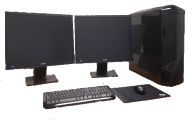Video forensic analysis is a crucial tool in modern investigations, allowing experts to examine, enhance, and authenticate video evidence. Whether used in criminal cases, accident reconstructions, or security assessments, forensic video software plays a vital role in uncovering critical details that might otherwise go unnoticed. This guide explores the fundamentals of video analysis, its applications, and best practices for accurate and reliable results.
What Is Video Forensic Analysis?
Understanding the Process
Video forensic analysis involves the scientific examination of digital or analog video recordings to verify authenticity, enhance clarity, and extract valuable information. Experts use specialized forensic video software to analyze footage, identify inconsistencies, and present findings in a legally admissible format.
Key Objectives
- Enhancement: Improving video quality to reveal crucial details such as faces, license plates, or objects in motion.
- Authentication: Determining whether a video has been altered, tampered with, or falsified.
- Analysis: Examining frame-by-frame data to establish event timelines or detect anomalies.
- Presentation: Preparing evidence for courtroom use with detailed reports and visual demonstrations.
The Role of Video Analysis in Investigations
Criminal and Legal Cases
Law enforcement agencies rely on video analysis to reconstruct crime scenes, identify suspects, and verify witness testimonies. By enhancing surveillance footage, investigators can extract evidence that may be critical for solving cases.
Accident and Insurance Claims
Accidents captured on dashcams, security cameras, or mobile devices can be analyzed to determine fault and validate claims. Forensic video software helps adjusters and legal teams assess the sequence of events and prevent fraudulent claims.
Surveillance and Security
Security professionals use video forensic analysis to monitor suspicious activity, detect unauthorized access, and improve surveillance footage for enhanced clarity. This is particularly useful in corporate, governmental, and public safety settings.
Best Practices for Forensic Video Analysis
1. Preserve Original Footage
Always maintain the original, unaltered video file. Any enhancements or modifications should be performed on a copy to preserve the integrity of the evidence.
2. Use Reliable Forensic Video Software
Advanced forensic video software offers tools for deblurring, stabilizing, and color-correcting footage. Choosing the right software ensures accurate results and admissibility in legal proceedings.
3. Document the Analysis Process
Every step of the video analysis should be documented, including software settings, enhancement techniques, and findings. This transparency is essential for credibility in court.
4. Maintain Chain of Custody
To ensure evidence integrity, all video files should be securely stored, with access restricted to authorized personnel. Proper documentation prevents tampering and maintains legal credibility.
Conclusion
Video forensic analysis is an essential field that supports law enforcement, legal professionals, and security experts in uncovering truth from video evidence. By using advanced forensic video software, professionals can enhance video clarity, authenticate recordings, and provide critical insights for investigations. Whether used in criminal cases, accident reconstruction, or surveillance, video analysis plays a crucial role in modern forensic science.


